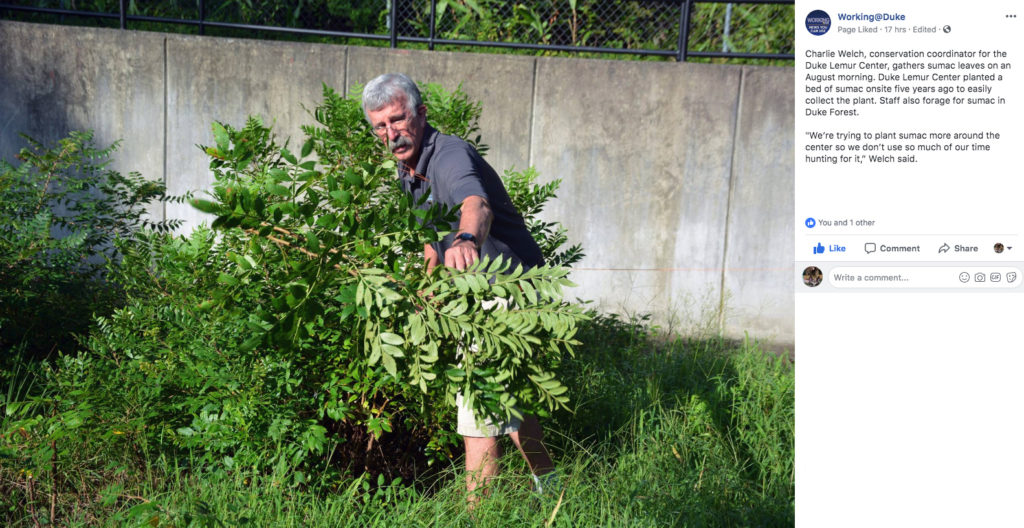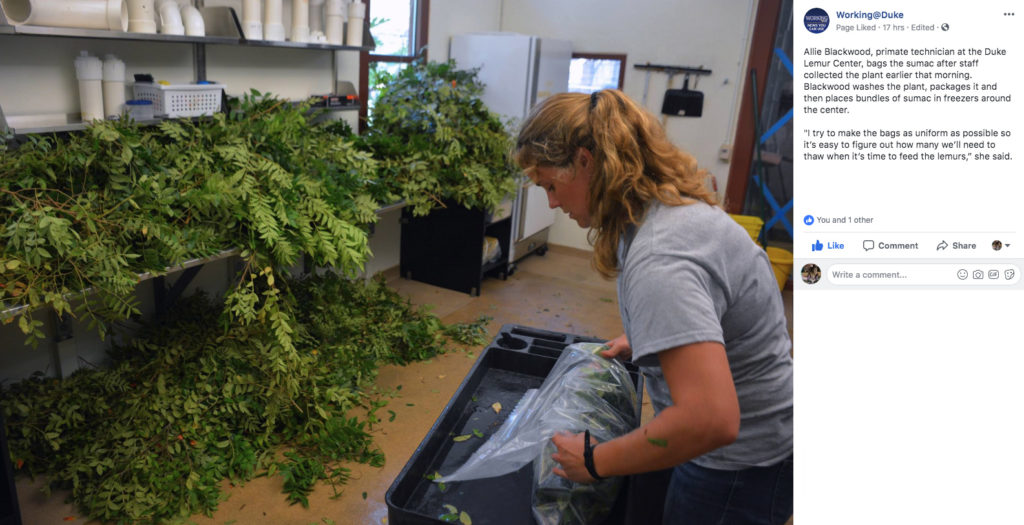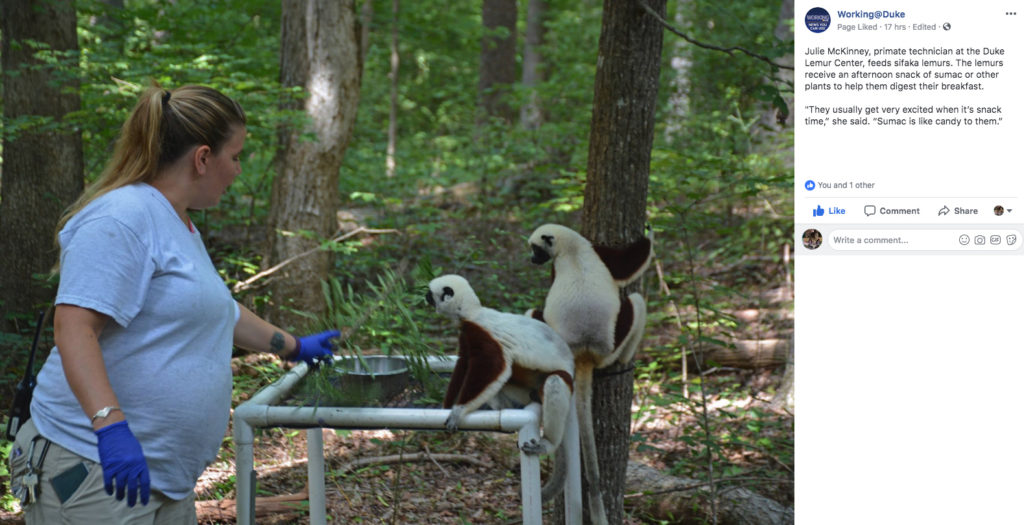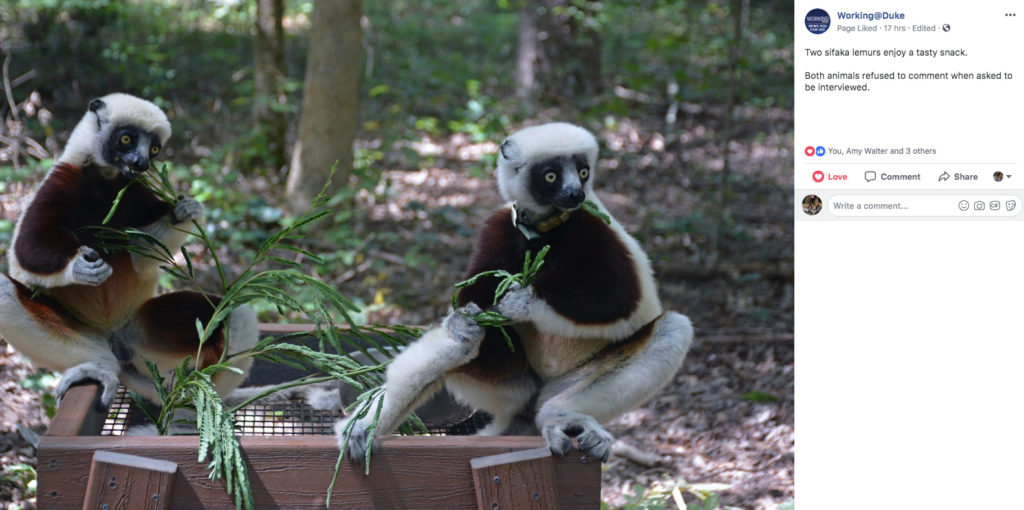Coquerel’s sifakas have extremely sensitive digestive systems and specialized nutritional needs. As a species, they have a reputation of being very delicate and difficult to care for, and the Duke Lemur Center is one of very few places that has succeeded in caring for and breeding them. So much so, in fact, that all sifakas in North America are on loan from, and managed by, the Duke Lemur Center.
Because of their sensitive digestive systems, sifakas are fed multiple times daily – which mimics the feeding bouts wild sifakas have throughout the day and keeps our lemurs’ GI tracts operating at a level of fill similar to that of wild populations. As part of our feeding strategy, we distribute browse to the sifakas every afternoon — even to our free-ranging sifakas. In the wild, leaves comprise about 40-60% of sifakas’ diet; so it’s clear that browse is important, and introducing native NC browse plants into our sifakas’ diets has proved hugely beneficial!
We use fresh browse in the summer, but in winter, we feed out frozen sumac. Every fall, the sumac is cut from various locations around Durham and then washed, bagged, and frozen the same afternoon. (The sumac can’t sit overnight.)
Note: The sumac that we grow and harvest is winged sumac, Rhus copallinum — not poison sumac, Toxicodendron vernix. Although they are in the same plant family of Anacardiaceae, they are definitely different plants. Toxicodendron is the same genus as our poison ivy, which believe it or not some of our DLC lemurs in the forest enclosures like to eat!
The harvest was recently documented by Jonathan Black, reporting for DukeTODAY. Jonathan’s text and images are below.
Photos and captions by Jonathan Black for DukeTODAY.





